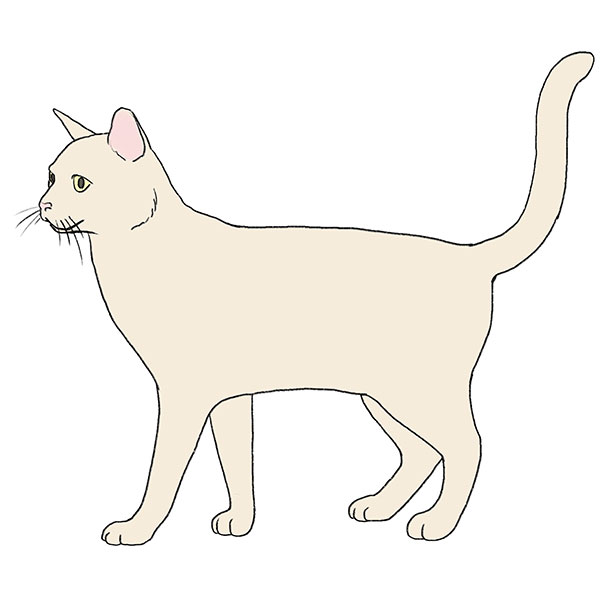How to Draw a Snake
Explore our comprehensive guide on how to draw a snake, perfect for both beginners and experienced artists. Learn to render a snake fluid motion and textured scales step by step, from basic anatomy to detailed scale patterns, with our easy-to-follow instructions and tips for realistic depictions.
Delve into the fascinating world of reptilian art and learn to draw a snake with precision and creativity. Our expert guide leads you through the process, ensuring you capture the sleek movement and textured beauty of snake with every pencil stroke.
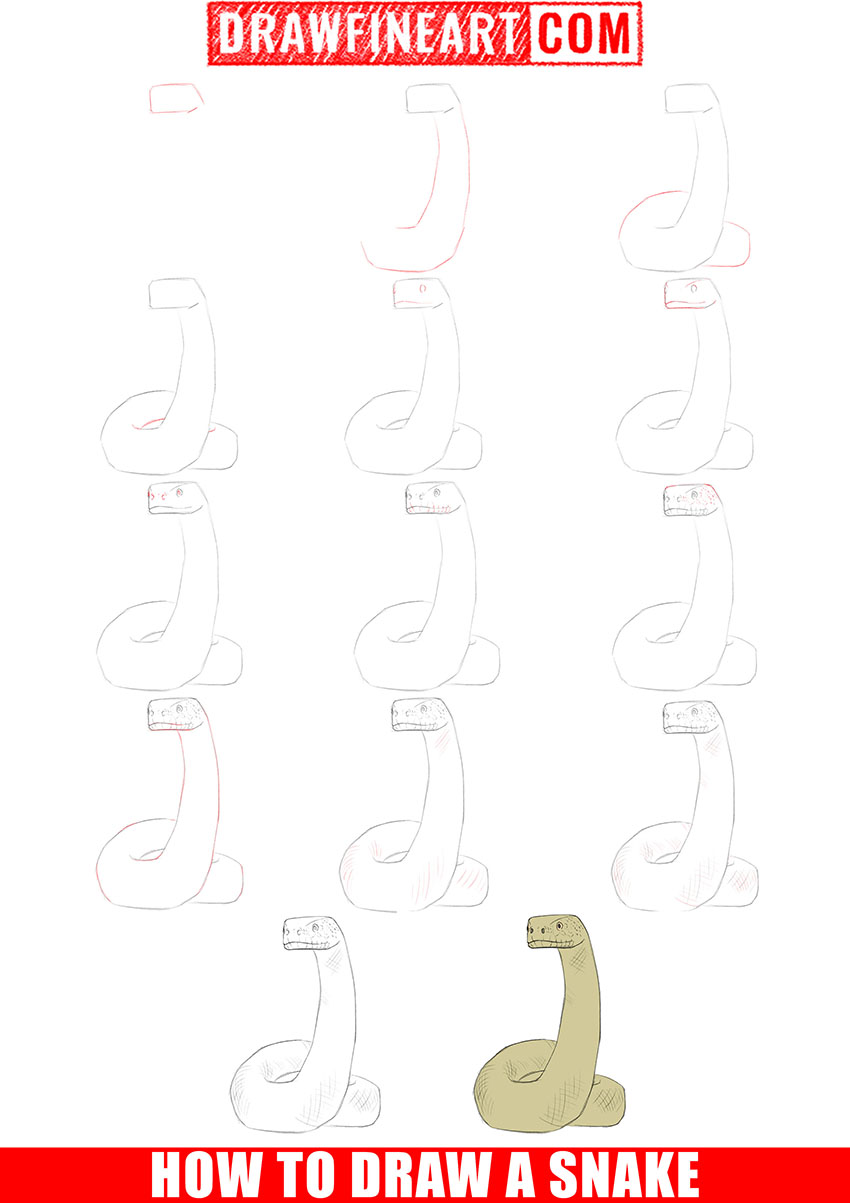
Table of Contents
- Introduction
- How to draw a snake step by step
- Snake video tutorial
- Completing the snake drawing tutorial
How to Draw a Snake: Introduction
How to draw a snake is an intriguing subject that combines fluidity of motion with complex textures. Snakes, with their scales and sinuous forms, offer a distinctive challenge that can enhance an artist’s skill set.
This lesson is designed to ease our readers into the process to draw a snake through a simplified approach that builds gradually to a more detailed rendering.
When setting out to draw a snake, one must give particular attention to the creature’s anatomy. The sleek body of a serpent moves in curves and loops, demanding an understanding of how to depict movement and perspective on a flat surface.
Our tutorial breaks down the process to draw a snake body into segments, allowing for a step-by-step approach that starts with the basic shapes and then moves on to the intricate patterns of the scales.
Throughout this lesson on how to draw a snake, we stress the importance of observation and patience. As readers practice to draw a reptile, they will learn techniques for rendering the illusion of smooth or keeled scales, the subtle undulation of the body, and the characteristic features of the head and eyes.
With practice, anyone following this guide will be capable of producing a convincing snake drawing, capturing not just the physical likeness but also the essence of this captivating reptile.
How to Draw a Snake Step by Step
Step 1 — Determine the position of the head.
Begin your drawing by lightly sketching the outer contours of the head. Use delicate strokes to mimic the shape shown in the example, ensuring to capture the geometry and angles accurately.
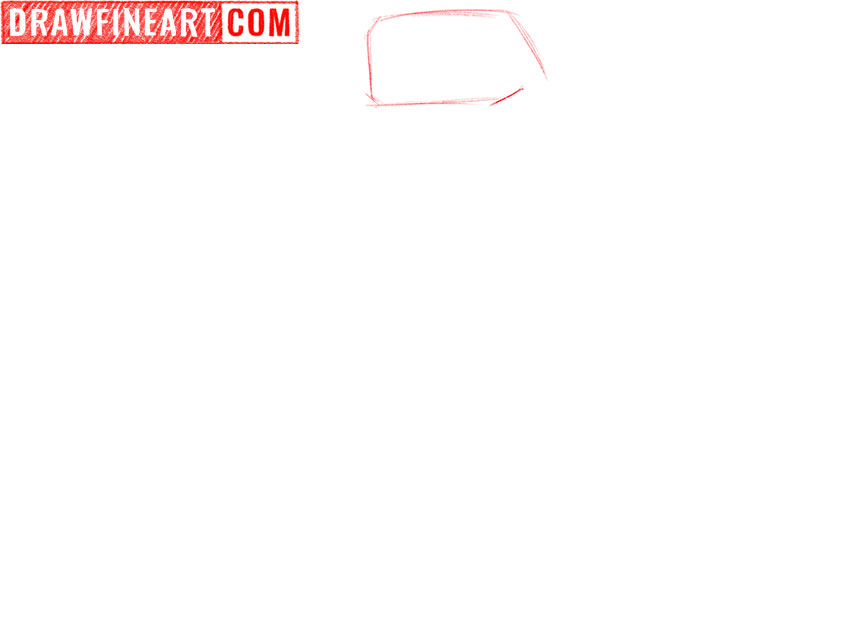
Step 2 — Draw the outline of the snake upper body.
From the head, draw smooth, curving lines downward. The body should be narrower at the top near the head and gradually widen as it flows downwards, capturing the natural form of the physique.
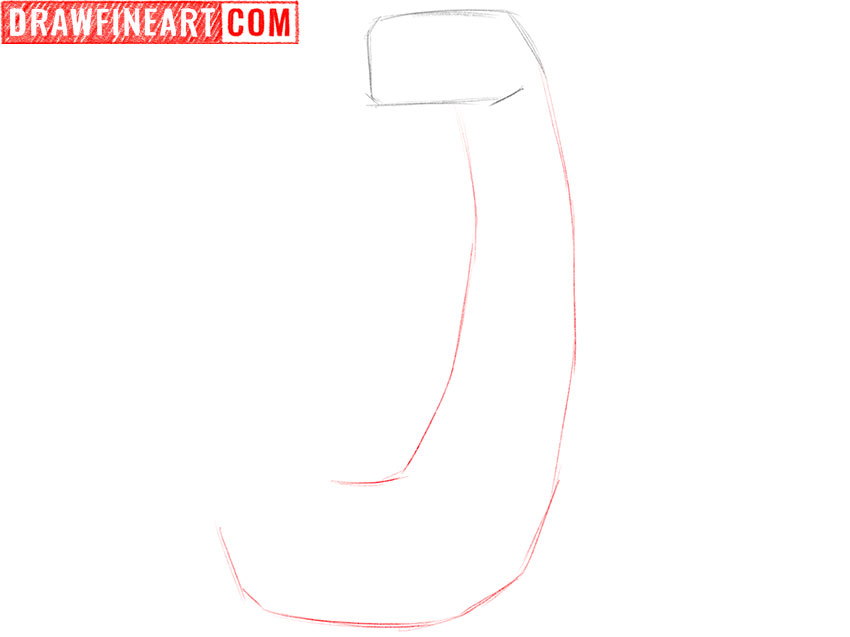
Step 3 — Add the curves of the body.
Continue outlining the body, adding two bends to draw its coiling motion. Use smooth, curved lines to form these bends, ensuring that you maintain correct proportions to reflect the lithe and flexible nature.

Step 4 — Give the body some thickness.
At the lower portion of your snake drawing, add a series of small curved lines to draw the body thickness. These lines should convey the body volume and the robust form as it coils on the ground.
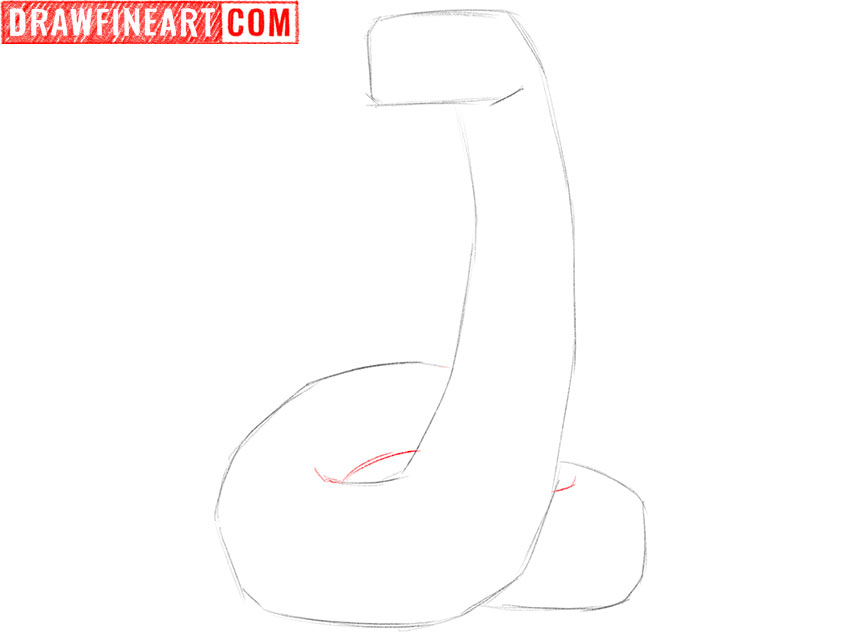
Step 5 — Draw the snake eyes and mouth.
Continue to detail the body by drawing the eyes with oval shapes. Then, use a smooth, curved line to draw the wide mouth, adding expression and character to the facial features.
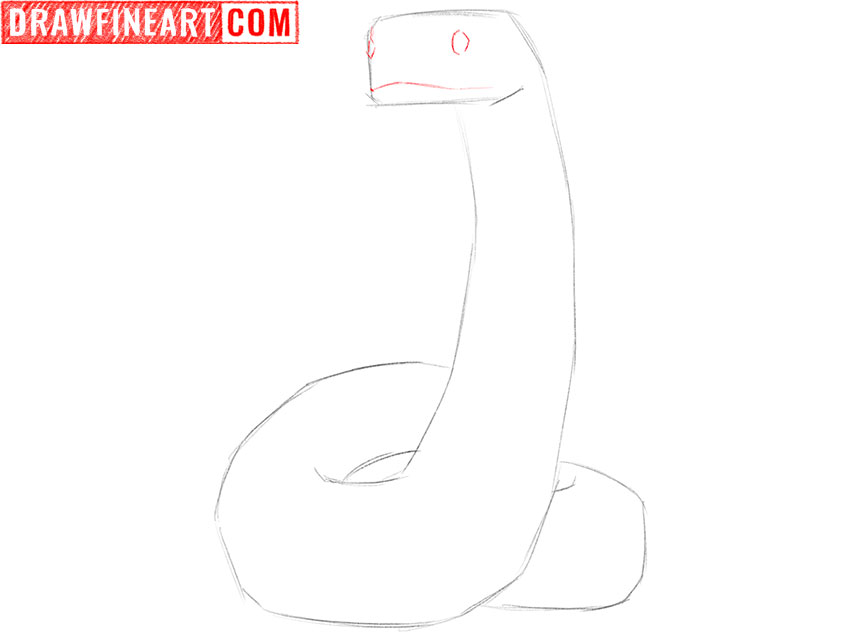
Step 6 — Make the outline of the head clearer.
Follow the preliminary lines and carefully outline the head, shaping it correctly. Define the mouth line clearly and draw the eyebrow ridges to give the face definition and expression.
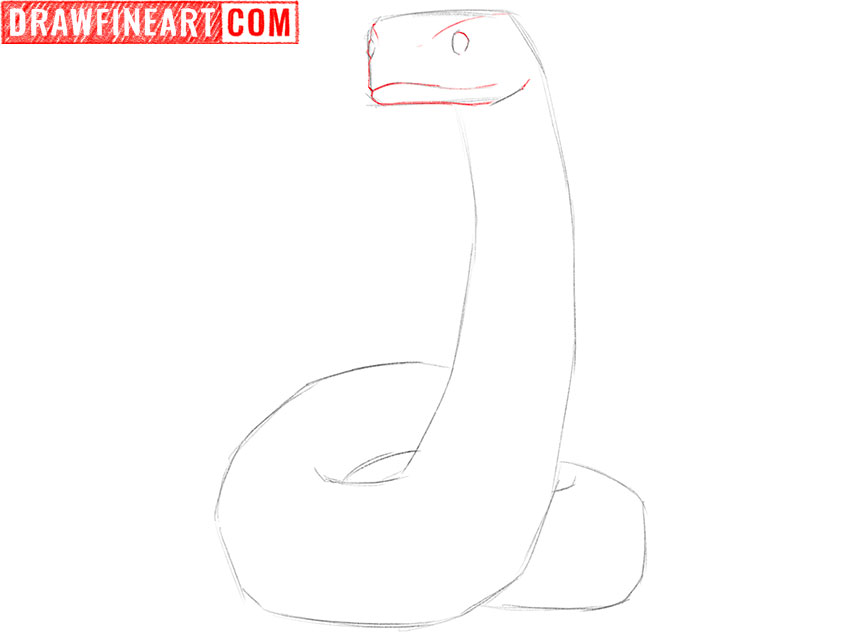
Step 7 — Detail the snake eyes and draw the nostrils.
Draw the pupils into the snake eyes, ensuring they are oval. Position the nostrils in the middle of the head, also as ovals, and sketch small folds around them to add realism to the facial features.
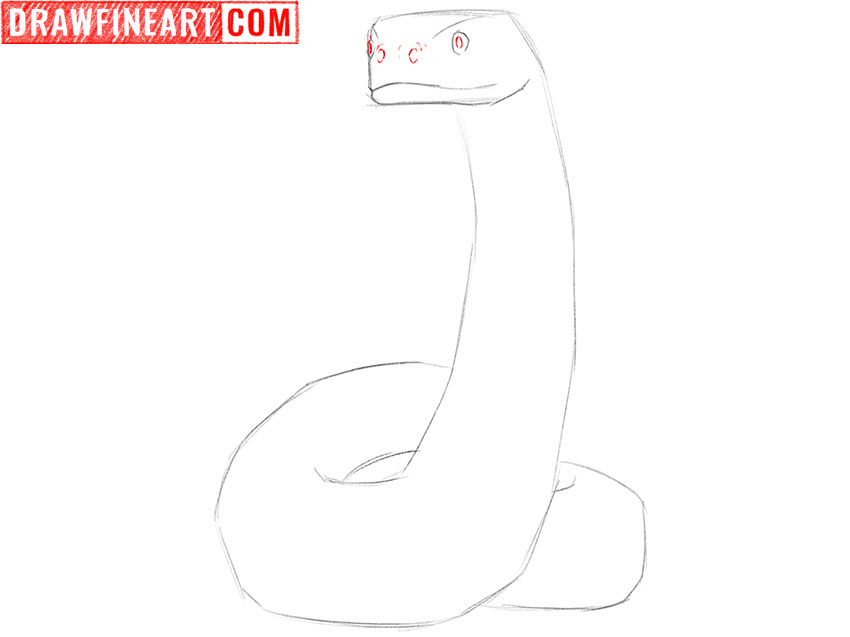
Step 8 — Detail the bottom of the head.
Sequentially draw small curved lines along the upper and lower jaws to create folds, enhancing the reptile realistic appearance. This detail will give texture to the skin, suggesting the flexibility and movement of its jaw.

Step 9 — Detail the top of the head.
Sharpen the upper outline of the head to define its form. Now, draw the small scales covering the body with numerous tiny curved lines, ensuring they follow the contours of the snake sinuous shape.
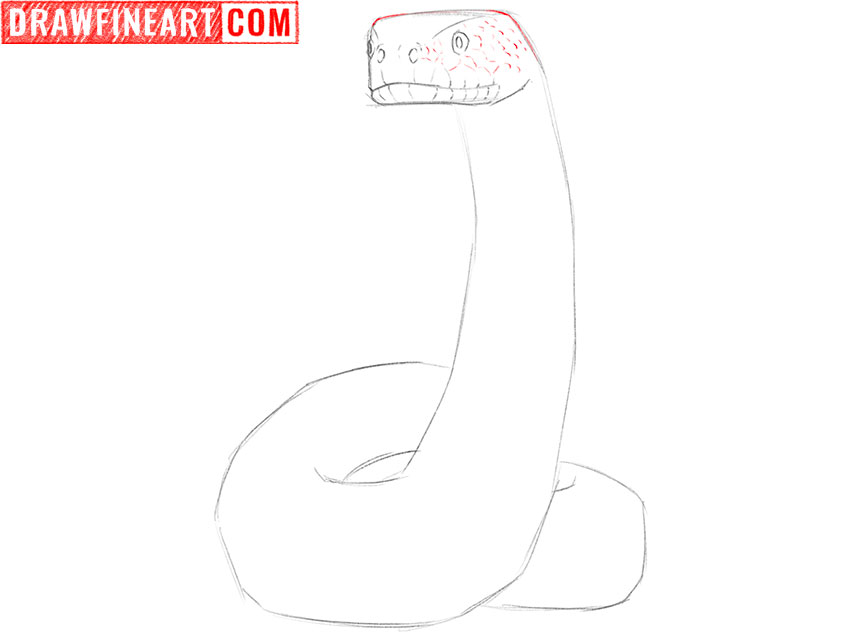
Step 10 — Make the outline of the body clearer.
Follow the lines you’ve established in previous steps to trace the contour of the body. This will sharpen your snake drawing, giving the snake form clearer definition and making it more pronounced on the page.
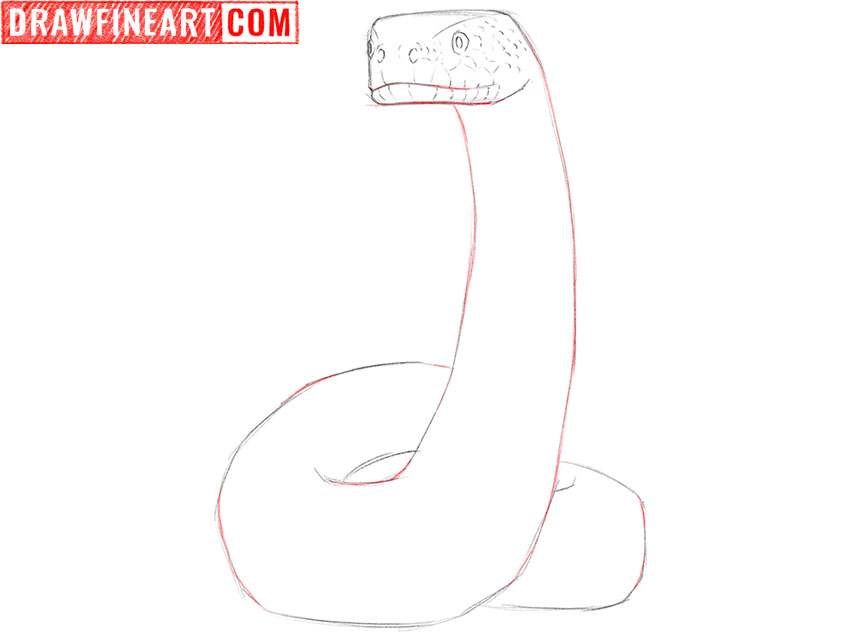
Step 11 — Detail the surface of the body.
Draw the snake scaly texture by drawing fine lines. Pay attention to the directionality of these lines; they should follow the snake form, wrapping around the body to enhance the 3D appearance of the skin.
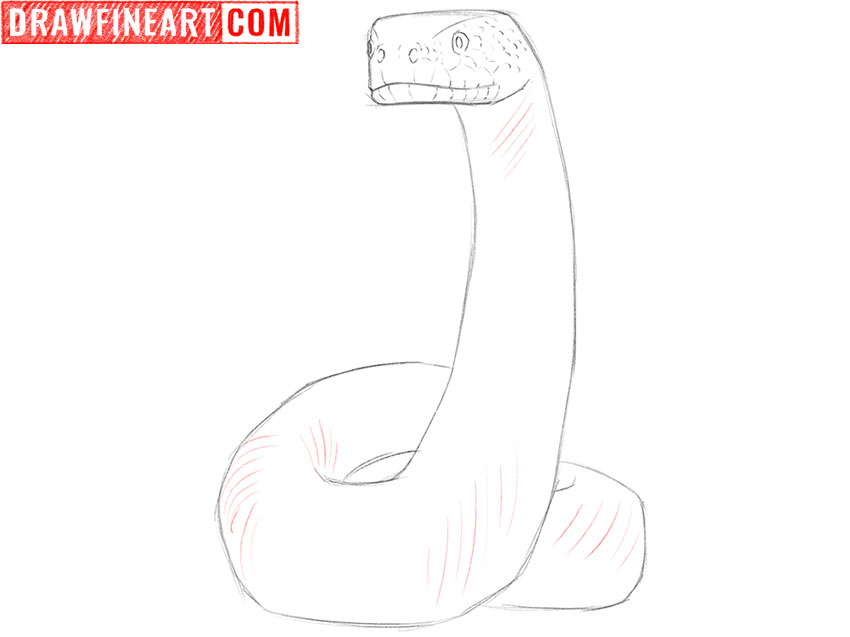
Step 12 — Draw the remaining elements on the snake body.
Similar to the previous step, continue to detail the body surface. Draw additional fine lines, but this time crosshatch by altering the lines’ direction to create a more complex appearance of the scales.
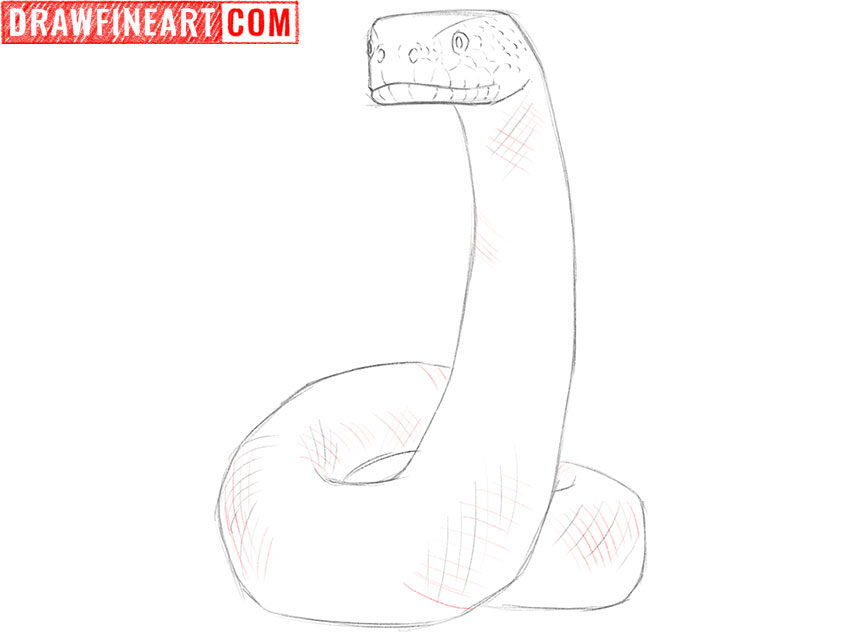
Step 13 — Correct any inaccuracies.
Now that all parts of the body are drawn, take a moment to review your work for any inaccuracies. Make corrections as needed to ensure every aspect of the reptile is proportionate and well-defined.

Step 14 — Color the snake drawing.
Choose olive tones to color the body, giving it a lifelike appearance. Paint the irises with a vibrant orange hue, and use a dark gray for the pupils and nostrils, adding depth and realism to your snake drawing.

How to Draw a Snake: Video Tutorial
Completing the Snake Drawing Tutorial
As we conclude our snake drawing tutorial, consider the dynamic impact an environment can have on your artwork. Here are some detailed suggestions for various habitats you can create:
- Rainforest: Initially, illustrate a dense canopy with dappled sunlight filtering through. Add tropical plants with large leaves, which could serve as a resting spot for this animal.
- Desert: Next, envision a stark, sandy landscape with scattered rocks and hardy desert plants. This setting provides a sunlit backdrop that offers a striking contrast with the snake’s form.
- Woodland: Then, create a leaf-strewn forest floor with patches of moss and bark for the serpent to navigate, using a palette of greens and browns to suggest the cool, dappled shade.
- Water’s edge: Alternatively, place your serpent by a tranquil pond, with reeds and water plants. Here, the challenge is to capture the reflective quality of water, adding a sense of peace and stillness.
- Rocky terrain: Finally, depict the ruggedness of a mountainous area or a rocky outcrop. The reptile can be shown winding through stones and pebbles, its scales echoing the textures of the terrain.
Using these transitional settings encourages a narrative within your artwork, each with its unique challenges and opportunities to expand your drawing techniques. Play with these scenarios to explore the full narrative potential of your snake drawing.

